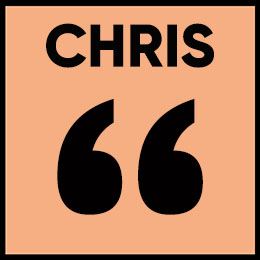Health Teachers + Professional Development Make a True Difference for Students
By Chris Moore, MS and Rachel Erisman | March 13, 2019
Health Educator/Assistant Soccer Coach (CM) and Health & Physical Education Instructor (RE), Fort Worth Independent School District
You could call us lucky health teachers. We are lucky enough to work within the Fort Worth Independent School District. For the last several years, FWISD has put a big emphasis on professional development (PD) for its health teachers.
This has helped us become stronger and better educators. It’s helped all our colleagues—both the seasoned vets and the newbies. Most importantly, it’s creating a more engaged and energetic health education environment for our students. We have some suggestions for educators who’d like to introduce more effective PD in their setting.
This is the third post in a series about health education teachers and professional development. Check out the earlier posts in this series:
- Professional Development for Teachers Makes Health Education Soar describes the FWISD approach to teacher PD.
- Exemplary Professional Development: What Are the Critical Elements? outlines the essential components of effective PD.
Even a Great Curriculum Demands Planning and Prep
We use ETR’s HealthSmart program. It has plenty of great features, including that it has everything you need to teach the classes—teacher guide, student materials, slides. Sometimes newer teachers look at the materials and think, “Oh, everything I need is right here, and the teacher guide is so easy to follow. I can just walk into the classroom and teach this.”
Every year, we do a New Teacher Academy for newly hired health teachers. We start out with a walk-through of the first lesson they will teach from the program. As we go over the process step-by-step, they begin to realize that doing these lessons well takes planning, forethought, reflection and preparation. They need to read everything, know the materials and be thinking about the ways they’re going to engage their students to make the learning relevant.
Even returning teachers find these reviews helpful. We gain a deeper understanding of a lesson and where it’s going as we teach it multiple times.
 “Sometimes, the fourth time I’m doing a lesson, I’m like, ‘Oh, I REALLY get it now.’”
“Sometimes, the fourth time I’m doing a lesson, I’m like, ‘Oh, I REALLY get it now.’”
We All Traveled Here on Different Roads
Our health teachers get here in all kinds of different ways. Many do not have background training in health education. Some have been working in other fields before they come to teaching. A few take health teaching positions as a way to “get into” a school system.
 “I started my career in Kindergarten PE. When I was getting my degree in PE, I didn’t even know there was an option to study health education. One of my favorite college professors, Dr. Deborah Gibson, opened my eyes to other possibilities. Her classes are what initially sparked my interest in health ed. When the opportunity came up, I got excited—fired up! I love teaching this subject.”
“I started my career in Kindergarten PE. When I was getting my degree in PE, I didn’t even know there was an option to study health education. One of my favorite college professors, Dr. Deborah Gibson, opened my eyes to other possibilities. Her classes are what initially sparked my interest in health ed. When the opportunity came up, I got excited—fired up! I love teaching this subject.”
 “I got a degree in PE. When I was looking for work, several people said, ‘You’ll have a hard time getting a PE position—no one gives those jobs up. You should get certified as something else too.’ I did some long-term subbing, and once I took over a health class for eight weeks. I realized I didn’t like teaching graded classes, but I really liked teaching health. I cared about this subject because it would have a lasting impact on my students. So I got certified in health.”
“I got a degree in PE. When I was looking for work, several people said, ‘You’ll have a hard time getting a PE position—no one gives those jobs up. You should get certified as something else too.’ I did some long-term subbing, and once I took over a health class for eight weeks. I realized I didn’t like teaching graded classes, but I really liked teaching health. I cared about this subject because it would have a lasting impact on my students. So I got certified in health.”
This means teachers come into our district with a wide range of experience and learning. One of the goals of our PD program—and one we think we’re meeting well—is to get everyone on the same page when it comes to understanding and valuing a strong, informed pedagogy for health education.
We Make Mistakes
Everyone who teaches makes mistakes. Especially in health, it’s important to see those mistakes as you go along and correct your course. This can be a difficult step for new teachers. They may not understand why a class isn’t working. They don’t want to look unprofessional in front of students, or unprepared in front of colleagues. They may not know who to ask for support.
Our PD program takes this into account. The goal is for all teachers to be absolutely the best they can be. That’s why we schedule in classroom observations and build in mentorship relationships. If you’re in a college program and do student teaching, you come in a few weeks after the mentor has already established expectations and procedures. You don’t see how much front loading goes into setting up a class. We set up our PD to help new teachers start developing these skills immediately.
We want every teacher to have someone to call on when they have questions, want guidance or need other support. We want every teacher to constantly strengthen their skills.
 “The first time I ever taught the ‘STD Signature Sheet’ lesson, it was a total disaster. I only had three students in the class, and the activity doesn’t work with three students. It was the worst lesson ever! Then I taught it in a class of 20 students and it was great. That mistake helped me realize that I need to think through an activity beforehand and make sure it’s going to work with each class.”
“The first time I ever taught the ‘STD Signature Sheet’ lesson, it was a total disaster. I only had three students in the class, and the activity doesn’t work with three students. It was the worst lesson ever! Then I taught it in a class of 20 students and it was great. That mistake helped me realize that I need to think through an activity beforehand and make sure it’s going to work with each class.”
Professional Development Lets Us Offer Better Programs to Students
Because of our PD program, students get a more prepared teacher. Every student gets a better version of the lesson than they would if their teacher hadn’t received training. All our health teachers know they need to bring preparation and structure to their teaching. The delivery of learning is more uniform across the board.
The trainings also help teachers build better connections with students. One of the most valuable skills any health teacher can learn is how to be sensitive to the needs and personality of each distinctive class. Some classes are more talkative and active. Some are more introspective. The first foundation is building a relationship with our students—showing them that we respect them and want to listen to their voices and ideas. This fosters a trust in the classroom that lets them feel more comfortable.
Since students are more engaged, they are more open to learning and more willing to practice the skills.
Those of us with PE backgrounds understand how this works. We would never spend 20 minutes explaining to a soccer player how to kick a penalty kick, then expect that player to do it perfectly in a game two weeks later. As health teachers, we can’t tell students how to refuse an unhealthy choice, and then expect them to use that information in real life without time to create their own refusal statements and practice using them.
Also, when students hear from their peers, they are able to see our concepts and learning objectives in a place that is relevant to them. We want to create an environment where it is safe for them to be their true selves, share ideas and make mistakes that will be turned into learning opportunities.
These are some of the deeper issues we’re able to address in our PD program.
 “We’ve had a lot of focus on ‘nice-to-know’ versus ‘need-to-know’ in our training. We have very little time with our students and want to maximize that to the best of our abilities. It’s nice for students to know how many bones are in the body. But students need to know how to choose a healthy snack or say no to an unwanted risk. I am constantly reflecting now in my teaching and asking myself, ‘Is this nice-to-know or is it need-to-know?’”
“We’ve had a lot of focus on ‘nice-to-know’ versus ‘need-to-know’ in our training. We have very little time with our students and want to maximize that to the best of our abilities. It’s nice for students to know how many bones are in the body. But students need to know how to choose a healthy snack or say no to an unwanted risk. I am constantly reflecting now in my teaching and asking myself, ‘Is this nice-to-know or is it need-to-know?’”
 “We’ve been doing our PD events for five or six years now. At this point, the amount of time I’ve spent exploring health pedagogy in our district’s PD program actually exceeds the time I spent on this in my undergraduate program. We’ve been blessed to have one of the top specialists in the country, Dr. Susan Telljohann, lead many of our workshops and observe our classes. She’s helped us all hone our craft.”
“We’ve been doing our PD events for five or six years now. At this point, the amount of time I’ve spent exploring health pedagogy in our district’s PD program actually exceeds the time I spent on this in my undergraduate program. We’ve been blessed to have one of the top specialists in the country, Dr. Susan Telljohann, lead many of our workshops and observe our classes. She’s helped us all hone our craft.”
Advocate for the Professional Development You and Your Students Deserve
The strongest PD programs for teachers will have robust support from school and district administrators. If you’re a classroom educator, we have some suggestions on how to advocate for an exemplary program in your setting.
- Get talking. Talk to your colleagues. Talk to your department director. Ask questions, identify areas where you’d like to build strengths, and ask for support.
- Join organizations. Join local, state and national organizations for health teachers. Attend their conferences. Volunteer to present workshops. Connect with educators in other districts and other states. This is especially important for teachers in rural communities, who have less opportunity to interact with others in the field.
- Find out what’s out there. Ask about the PD programs colleagues in other districts and states enjoy. Check out curricula and resources. Get contact information for some of the outstanding presenters you see at conferences, and make connections with organizations that offer PD.
- Take it back to your administration. We have found that administrators like solutions, not problems. It’s fine to present them with a challenge. Then be ready with a practical solution.
- Keep the benefits to students forward, and use your data. Our administrators love data. We share national YRBS findings as well as our local YRBS data. Sometimes it’s helpful to choose one or two issues that are especially relevant in your area and focus on those. Be sure administrators know that high quality PD translates to better outcomes for students.
- Create a supportive network across your campus. Make contact with counselors, social workers and administrators to address health risks facing your students. Remember, they have resources you do not have. Collaborate to address these issues campus-wide so that all school staff are appropriately trained.
 “When I was a new teacher, I was afraid to ask for help. I was the only health teacher at my school. Until I started going to conferences and connecting with other educators, I was just kind of floating through.”
“When I was a new teacher, I was afraid to ask for help. I was the only health teacher at my school. Until I started going to conferences and connecting with other educators, I was just kind of floating through.”
 “Don’t be afraid to talk to your director about a weakness. There’s a good chance your weakness is another person’s area of strength. We had a new teacher who was nervous about having to do a condom demo in her class. She asked for help, so we invited her to one of my classes so she could watch me do the lesson. After that, she felt much more confident about doing the lesson.”
“Don’t be afraid to talk to your director about a weakness. There’s a good chance your weakness is another person’s area of strength. We had a new teacher who was nervous about having to do a condom demo in her class. She asked for help, so we invited her to one of my classes so she could watch me do the lesson. After that, she felt much more confident about doing the lesson.”
 “Our PD experiences have empowered us to advocate more for our students. I’m on the attendance committee on my campus. We were looking for ways to reduce absenteeism. Our local data from the 2017 YRBS showed that 9.2% of our high school students self-reported that they’d missed at least one day of school in the previous 30 days because they felt unsafe at school or on the way to or home from school. I showed this to our principals, counselors and teachers on the committee. We’ve put together an accountability checklist for students with high absence rates. One thing they will be asked is if they missed school because they felt unsafe. That will help us get an appropriate intervention or support in place if needed.”
“Our PD experiences have empowered us to advocate more for our students. I’m on the attendance committee on my campus. We were looking for ways to reduce absenteeism. Our local data from the 2017 YRBS showed that 9.2% of our high school students self-reported that they’d missed at least one day of school in the previous 30 days because they felt unsafe at school or on the way to or home from school. I showed this to our principals, counselors and teachers on the committee. We’ve put together an accountability checklist for students with high absence rates. One thing they will be asked is if they missed school because they felt unsafe. That will help us get an appropriate intervention or support in place if needed.”
Health teachers have chosen a career that has the potential to affect students profoundly. In a sense, we are all lucky to be part of this exciting field. High quality PD allows us to maximize our impact and serve our students in the best way possible.
Chris Moore, MS, is a Health Educator and Assistant Soccer Coach at South Hills High School in the Fort Worth Independent School District. He has been a health teacher for eight years and taught PE for three years before that. He can be reached at Chris.Moore@fwisd.org. Rachel Erisman is a Health and Physical Education Instructor and the Local Wellness Coordinator at IM Terrell Academy for STEM & VPA, also in FWISD. She has been a health education teacher for nine years. She can be reached at Rachel.Erisman@fwisd.org.




